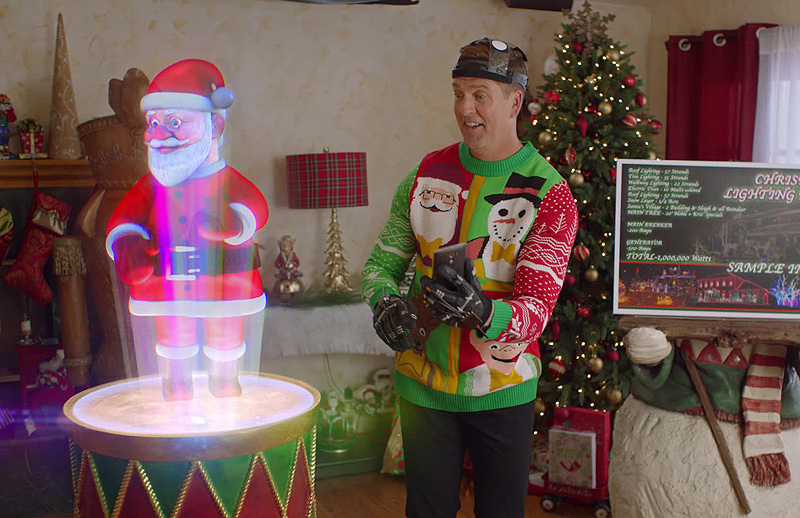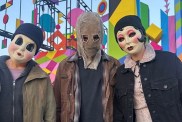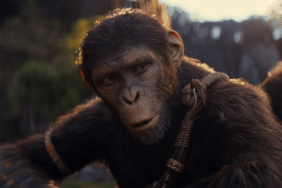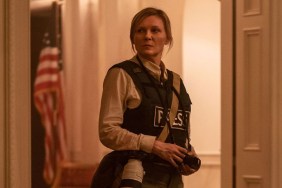ComingSoon.net spoke to TV vet Jay Kogen (The Simpsons, Frasier, School of Rock) about the new Holiday comedy I’ll Be Next Door for Christmas and, of course, The Simpsons. Check out the interview below!
RELATED: ComingSoon.net’s 2018 Holiday Gift Guide
Experience the holiday season with I’ll Be Next Door for Christmas on Digital HD. Starring Juliette Angelo (Mad Men), Beth Littleford (The Daily Show), Jonathan Mangum (Let’s Make a Deal), Nicole Sullivan (MADtv, The King of Queens), Kirrilee Berger (K.C. Undercover), Regan Burns (Dog with a Blog), and the absolutely adorable feline sensation Lil BUB (Nine Lives), the film is a heartwarming comedy that reminds viewers that Christmas is all about spending time with family (even if they drive you crazy). The world’s first Christmas movie to use investment crowdfunding successfully, I’ll Be Next Door for Christmas is now available for the suggested retail price of $12.99.
I’ll Be Next Door for Christmas is a warmhearted, upbeat comedy feature film about a family that’s crazy for Christmas. Except for the 16-year-old daughter – her family’s over-the-top Christmas celebrations have made her life miserable. When her out-of-state boyfriend decides to visit at Christmas, she’s determined to spare him her family’s Christmas craziness, so she hires actors to play her parents and stages a fake Christmas dinner in the empty house next door. What could possibly go wrong?
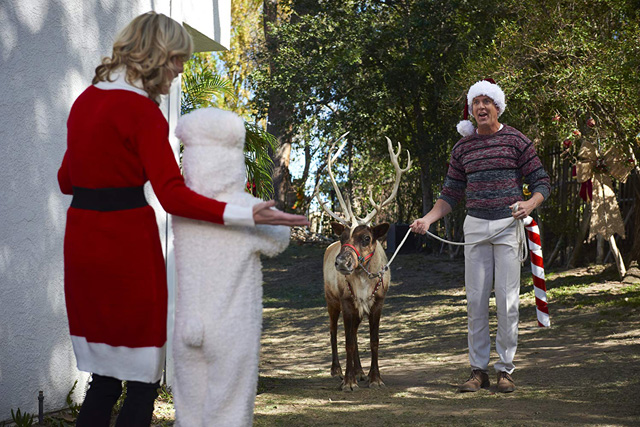
ComingSoon.net: You’ve done a few movie things, but you’ve been involved in mostly television shows. So what was the magnet that drew you to doing this movie in particular?
Jay Kogen: Well, I had a buddy who said, “You want to make a Christmas movie? Will you help me?” And I said, “Sure.” And I like Christmas movies. I think most people do. And it seemed like a fun project and to start a movie from the ground-up seemed like fun, to make a movie without a studio seemed like a lot of fun, having worked for studios for many, many years. So this was all great. So it was definitely a labor of love and a lot of fun to work on.
CS: What do you think is the appeal of Christmas, even on a secular level?
Kogen: Tthe secular version of Christmas is what most people talk about. Very few people talk about the miracle of the birth of Christ. Most people talk about the idea of taking time out to be with family, be with friends, tell everyone you love each other. The pageantry of the presents, the tree and the decorations, sort of making the world look a little special. All of that is beautiful and lovely and very singularly it’s a creation of 19th and 20th century people deciding we’re going to do something different with Christmas. And so, Santa Claus is for a Coca-Cola poster and the idea of giving gifts like Charles Dickens helped solidify Christmas in the 1800s. As a meaningful time beyond religion.
CS: This movie is an interesting test for the model of doing investment crowdfunding.
Kogen: Unfortunately, I cannot speak to any of that because the writer, director and producer of this movie named David Willis did all of that. And in a spectacular fashion that I don’t know that anyone’s ever done before. He would be the guy to talk to about it because he worked for many years to figure out how to do this. He started by just trying to get a big fish in one investor and then he found that that was not… a lot of people talk about investing in movies, but nobody really wants to do it. But then, to build a prospectus and a business plan and an accounting procedure so that people knew their money was safe and to have vetted all that stuff, I had no idea how he did it, but he did.
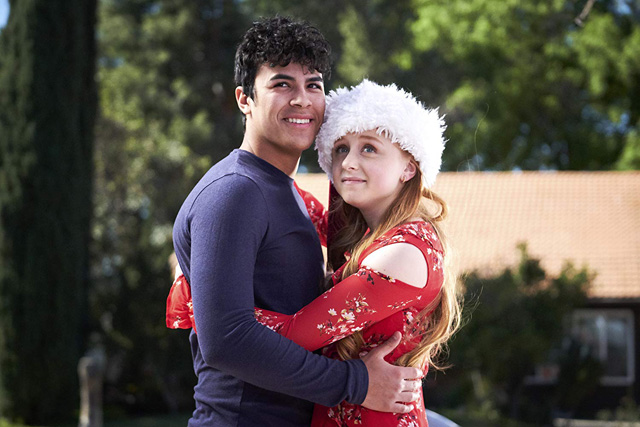
CS: There’s that joke about, “How do you become a millionaire making independent movies? You have to start as a billionaire.”
Kogen: Right. That’s right. True. Although some movies break out. Some movies do it. But again, this is a labor of love. So a lot of people invested in this movie because they liked Christmas and they wanted to invest in a Christmas movie and they wanted to be a part of something that they thought was special. Not all of these investors are in it to make a ton of money. Hopefully all of these people will make their money back and we expect them to get their money back, and hopefully, a little profit, but who knows? If it breaks big, then maybe they get a big profit. But that wasn’t the main reason a lot of people put their money in, I don’t think.
CS: It’s an interesting model because for years now people have been used to the Kickstarter model, where you just give money to this thing because you want this thing to happen but you don’t actually get anything.
Kogen: Yeah, and this wasn’t that. This was a real prospectus, a real business plan and it was real accounting and profit sharing when it happens. It’s different than just, “Here, take my money and make something.”
CS: As a big fan of Dana Gould I wanted to know a little about “The World on a String” pilot you guys did together. He’s described it as kind of like “Pee-wee’s Playhouse” meets “Seinfeld” and that just sounds amazing. Can you just tell me a little bit about that project and if you think it’ll ever see the light of day, the one that you produced?
Kogen: It will definitely never see the light of day. It was made a long time ago, and all the people that were involved in it have moved onto other things. But what the essence of it was, it was the life of a young actor. It was kind of like Dana’s life, the life of a young actor in Hollywood with surreal aspects to it like “Pee-wee’s Playhouse.” And so, that’s a fairly accurate description. We purposefully broke the fourth wall and used a lot of unusual ways of storytelling. There was a baby in the show that was played by an older, middle-aged man. And we used him because we had a puppet body and a middle-aged man face. So that was a character in the show. It was surreal like that. That’s the baby. And when the baby talks and says, “I want a cigar and steak,” again, it was strange, but the circumstance was very typical for a Los Angeles actor. It was Dana’s offbeat take on what that world would be like using some of his favorite things, which is always in-camera effects. He likes effects that are not special effects, anything digital. He likes real hands-on special effects. So we built models and we played with costumes and perspective and all kinds of fun stuff.
CS: It sounds awesome.
Kogen: It was. It was a great show.
CS: I didn’t think that there was any chance of it actually getting produced again, but I was just wondering if there’s any chance of people ever seeing the pilot that you made?
Kogen: I don’t know. I mean, these things are all wrapped up in legal rights. It’s all by 20th Century Fox and they would have to decide to set it free. And usually, they don’t, because they don’t want things that they’ve decided not to make to air because what if it was good and they made a mistake?
CS: Yeah, exactly. Like when Conan O’Brien did that wonderful pilot with Adam West…
Kogen: Yeah, “Lookwell”.
CS: Yes, and people saw it and they’re like, “You idiots, why didn’t you make that show?” So I guess that’s why they don’t do that.
Kogen: Exactly.
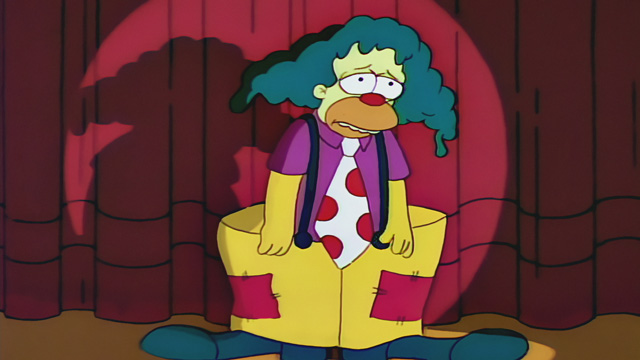
CS: I’m a huge “Simpsons” fan, and what I’ve always been curious about is the writer’s room, especially from the era that you were a part of with Wolodarsky and Swartzwelder, and all those people. What are some of your favorite memories from “The Simpsons” writer’s room?
Kogen: Well, off the top of my head, I remember my partner Wally Wolodarsky throwing a cup of 20th Century Fox commissary mashed potatoes up to the ceiling and it sticking there. And it stayed in that writer’s room for years. The mashed potatoes stuck to the ceiling for years. I remember making John Swartzwelder leave the room so he could smoke cigarettes. He’s a great writer. He’s a good guy and an interesting fellow. A lot of the times it’s just sitting on a couch trying to think of good ideas and being surrounded by really smart people doing the same thing. I remember having a joke, I laughed so hard I fell off the couch from a particular joke that I really liked.
CS: Do you remember the joke?
Kogen: I do remember the joke. It was a Frankenstein Halloween show and Mr. Burns removed the brain from a corpse and put it on his head and said, “Look at me, I’m Davey Crockett!” So it was the visual of that with the tail of the brain and the spinal cord as the Davey Crockett cap tail made me laugh. Thinking of the joke made me laugh very hard. I don’t know. I wish I had other amazing stories, but it’s overall, being in a room with James L. Brooks was fabulous. Sam Simon was a genius. Matt Groening was a very interesting and very funny fellow. You know, all good.
CS: You were responsible for what I consider to be a big turning point in the show, which was the “Like Father, Like Clown” episode, which is basically “The Jazz Singer.” Because it is funny, but you actually had lots of moments where there were no laughs, where it was just playing to the emotion.
Kogen: Yeah, I think we were always trying to do that, to play to the emotion. The very first show we wrote in year one called “Homer’s Odyssey,” Homer tried to kill himself. We tried to show the pathos of what it’s like to be a husband and a father and the difficulties that it entails and how the family survived. The best of that show is really great jokes attached to emotional resonance. So if you could do both, then you’re winning, but we always tried.
CS: Yeah. But there is something special about that episode. I know Brad Bird directed it.
Kogen: Yeah, he’s a genius director and it was fun to write. But again, that show, although Wally and I wrote it, was worked on by the entire group of writers. Every show was worked on by the entire group of really smart, funny people. They all took new jokes and moments and pitched us stories and made changes and all those kind of things. So yeah, all of this is a group effort by a really good group of guys, so it’s hard to take the credit for anything, or blame.
